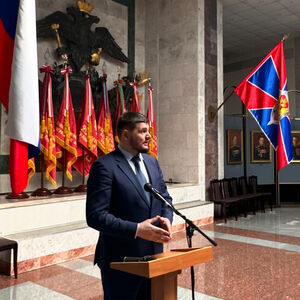Диссертация (1098795), страница 33
Текст из файла (страница 33)
2005. Vol. 53. P. 281 – 289.142. Church A. T., Alvarez J. M., Katigbak M. S., Mastor K. A., Cabrera H. F., TanakaMatsumi J., LockeK. D. Self-concept consistency and short-term stability in eightcultures // Journal of Research in Personality. 2012. Vol. 46(5). P. 556 – 570.143. Cleghorn J.M., Franco S., Szechtman B., Kaplan R.D., Szechtman H., Brown G.M. et. al.Toward a brain map of auditory hallucinations // American Journal of Psychiatry.
1992.Vol. 149. P. 1062 – 1069.144. Coe W. C., Sabrin T. R. Hypnosis from the standpoint of a contextualist // Annals of theNew York Academy of Sciences. 1997. Vol. 296. P. 2 – 13.145. Coe W. C., Sabrin, T.R. Role theory: hypnosis from a dramaturgical and narrationalperspective / S. J. Lynn and J. W. Rhue (ed.) Theories of Hypnosis: Current Models andPerspectives. New York: Guilford Press.
1991. P. 303 – 323.146. Coe W.C., Ryken. K. Hypnosis and risks to human subjects // American Psychologist.1979. Vol.34. P. 673 – 681.147. Cohen J. Statistical Power Analysis for the Behavioral Sciences (2nd ed.), New Jersey:Lawrence Erlbaum Associates. 1988. 567 p.144148. Collins, A. M., & Loftus, E. F. A spreading activation of semantic processing //Psychological Review. 1975. Vol. 82. P.
407-428.149. Collins, A. M., & Quillian, M.R. Retrieval time from semantic memory //Journal of VerbalLearning and Verbal Behavior. 1969. Vol. 8. P. 240-247.150. Conway A., Skitka L.J., Hemmerich J.A., Kershaw T. C. Flashbulb Memory for 11September 2001 // Applied Cognitive Psychology. 2009. Vol. 23 (5). P. 605-623.151. Conway M. A. Memory and the self // Journal of Memory & Language. 2005. Vol. 53. P.594 – 628.152.
Conway, M.A. Episodic memories // Neuropsychologia. 2009. Vol. 47(11). P. 2305-13.153. Conway M., Ross, M. Getting what you want by revising what you had // Journal ofPersonality and Social Psychology. 1984. Vol. 47(4). P. 738 – 748.154. Conway M.A., Loveday C. Remembering, imagining, false memories & personalmeanings // Conscious & Cognition. 2015. Vol. 33. P. 574 – 81.155. Conway, M.A., Pleydell-Pearce, C.W. The construction of autobiographical memories inthe self-memory system //Psychological Review. 2000. Vol. 107(2), P.
261-88.156. Conway M.A., Singer J.A., Tagini, A. The self and autobiographical memory:Correspondence and coherence // Social Cognition. 2004. Vol. 22(5). P. 491 – 529.157. Council J., Kirsch I., Vickery A. R., Carlson D. ‘Trance’ vs. ‘skill’ hypnotic inductions:the effects of credulity, expectancy, and experimenter modeling // Journal of Consultingand Clinical Psychology.1983. Vol.
51. P. 432 – 440.158. Cox R. E., Barnier A. J. Posthypnotic amnesia for a first romantic relationship: Forgettingthe entire relationship versus forgetting selected events // Memory. 2003. Vol.11. P. 307 –318.159. Cox R. E., Barnier A. J. Shifting self, shifting memory: Testing the self-memory systemmodel with hypnotic identity delusions // International Journal of Clinical andExperimental Hypnosis.
2013. Vol. 61. P. 416 – 462.160. Cox R.E., Bryant R.A. Advances in hypnosis research: methods, designs and contributionsof intrinsic and instrumental hypnosis / M.R. Nash, A. J. Barnier (eds.). The OxfordHandbook of Hypnosis: Theory, Research, and Practice. Oxford: Oxford University Press.2012. P. 311 – 337.161.
Craciun B., Holdevici I., Craciun, A. The efficiency of Ericksonian hypnosis indiminishing stress and procrastination in patients with generalized anxiety disorder //European Psychiatry. 2012. Vol. 27(1). P.1.145162. Crane L., Goddard L. Episodic and semantic autobiographical memory in adults withautism spectrum disorders // Journal of Autism and Developmental Disorders. 2008Vol.38(3). P.
498 – 506.163. Crawford H.J., Wallace B., Nomura K., Slater, H. Eidetic-like imagery in hypnosis: rarebut there // American Journal of Psychology. 1986. Vol.99. P. 527 – 546.164. Dennett D. C. Consciousness Explained. Boston: Little, Brown, and Company. 1991. 514p.165. Dienes Z., Perner, J. The cold control theory of hypnosis / G. A. Jamieson (ed.) Hypnosisand Conscious States: The Cognitive Neuroscience Perspective.
2007. Oxford: OxfordUniversity Press. P. 293 – 314.166. Dinges D. F., Whitehouse W. G., Orne E. C., Powell J. W., Orne M. T., Erdelyi M. H.Evaluating hypnotic memory enhancement (hypermnesia and reminiscence) using multitrial forced recall // Journal of Experimental Psychology: Learning, Memory, andCognition. 1992. Vol. 18. P.
1139 – 1147.167. Dubey R. S., Sharma S. C. The effect of manifest anxiety on time-estimation // Journal OfPsychological Researches. 1978. Vol. 22(3). P. 153 – 164.168. Dusek J. B., Flaherty J. F., Hill J. P. The development of the self-concept during theadolescent years // Monographs of the Society for Research in Child Development. 1981.Vol. 46. P. 1– 67.169. Dywan J. The illusion of familiarity: An alternative to the report-criterion account ofhypnotic recall // International Journal of Clinical and Experimental Hypnosis. 1995.Vol.43. P. 194 – 211.170. Dywan J. Toward a neurophysiological model of hypnotic memory effects // AmericanJournal of Clinical Hypnosis.
1998. Vol. 40. P. 217 – 230.171. Eagle M.N. A critical evaluation of current conceptions of transference andcountertransference. Psychoanalytic Psychology. 2000. Vol. 17. P. 24 – 37.172. Egner T., Jamieson G., Gruzelier J. Hypnosis decouples cognitive control from conflictmonitoring processes of the frontal lobe // NeuroImage. 2005. Vol.
27. P. 969 – 978.173. Eisler H., Eisler A., Hellström A. Psychophysical issues in the study of time perception /Grondin, S. (ed.). Psychology of Time. UK. Bingley: Emerald Group Publishing. 2008.435 p.174. Elkins G. R., Rajab M. H. Hypnotherapy for smoking cessation: preliminary results from athree-session intervention. International Journal of Clinical and Experimental Hypnosis.2004. Vol.
2. P. 73 – 81.146175. Eppley K., Abrams A.I., Shear, J. Differential effects of relaxation techniques on traitanxiety: A meta-analysis // Journal of Clinical Psychology. 1989. Vol. 45(6). P. 957 – 974.176. Epstein S. The self-concept revisited: Or a theory of a theory // American psychologist.1973. Vol.
28(5). P. 404 – 416.177. Erber, R., & Markunas, S. Managing affective states //Affect in social thinking andbehavior, 2006. P. 253-266.178. Erdelyi M. H. Hypnotic hypermnesia: The empty set of hypermnesia // InternationalJournal of Clinical and Experimental Hypnosis. 1994. Vol. 42. P. 379 – 390179. Evans F. J., Orne, M. T.
The disappearing hypnotist: the use of simulating subjects toevaluate how subjects perceive experimental procedures // International Journal of Clinicaland Experimental Hypnosis. 1971. Vol. 19. P. 277 – 296.180. Faith M., Ray, W. Hypnotizability and dissociation in a college age population: orthogonalindividual differences // Personality and Individual Differences. 1994. Vol. 17. P.
211 –216.181. Fellows B., Ragg L. The Carleton Skill Training Program: a preliminary British trial //Contemporary Hypnosis. 1992. Vol. 9. P. 169 – 174.182. Fivush R. Maternal Reminiscing Style and Children’s Developing Understanding of Selfand Emotion // Clinical Social Work Journal. 2007. Vol. 35.
P. 1– 31.183. Fivush, R. The development of autobiographical memory // Annual Review Psychology.2011. Vol. 62. P. 559-582.184. Frankel F.H. Hypnotizability and dissociation // American Journal of Psychiatry. 1990.Vol. 147. P. 823 – 829.185. Frauman D.C., Lynn S.J., Hardaway R., Molteni A. Effect of subliminal symbioticactivation on hypnotic rapport and susceptibility// Journal of Abnormal Psychology.
1984.Vol. 93. P. 481– 483.186. French L., Garry M., Loftus E.F. False memories: A kind of confabulation in non-clinicalsubjects / W.Hirstein (ed.), Confabulation. Views from neuroscience, psychiatry,psychology, and philosophy. Oxford: Oxford University Press. 2009. P.
33 – 67.187. Frenda, S.J, Nichols, R.M., & Loftus, E.F. Current issues and advances in misinformationresearch // Current Directions in Psychological Science. 2011. Vol. 20. P. 20-23.188. Freundlich B., Fisher S. The role of body experience in hypnotic behavior // InternationalJournal of Clinical and Experimental Hypnosis. 1974. Vol. 22. P. 68 – 83.189.
Fromm E. Ego activity and ego passivity in hypnosis // International Journal of Clinicaland Experimental Hypnosis. 1972. Vol. 20. P. 238 – 251.147190. Fromm E., Oberlander M.I., Gruenewald D. Perceptual and cognitive processes in differentstates of consciousness: the walking state and hypnosis // Journal of Projective Techniquesand Personality Assessment. 1970. Vol. 34. P. 375 – 387.191. Garry M., Manning C. G., Loftus E. F., Sherman S. J. Imagination inflation: imagining achildhood event inflates confidence that it occurred // Psychonomic Bulletin & Review.1996.
Vol. 3(2). P. 208 – 214.192. Gawler I. The creative power of imagery: specific techniques for people affected by cancer// Australian Journal of Clinical Hypnotherapy and Hypnosis. 1998. Vol. 19. P. 17 – 30.193. Geraerts E., Bernstien D. B., Merckelbach H., Linders C., Raymaekers L., Loftus E.
F.Lasting false beliefs and their behavioral consequences // Psychological Science. 2008.Vol. 19. P. 749 – 753.194. Gergen, K J., Gergen, M. M. Narrative and the self as social relationship / In L. Berkowitz(Ed.), Advances in experimental social psychology /San Diego: Academic Press. 1988. P.17–56.195. Glass L. B., Barber T.
X. A note on hypnotic behavior, the definition of the situation, andthe placebo effect // Journal of Nervous and Mental Disease. 1961. Vol.132. P. 539 – 541.196. Goddard, L., Crane, L. Pring, L. Brief report: Self-defining and everyday autobiographicalmemories in adults with autism spectrum disorders // Journal of Autism andDevelopmental Disorders. 2010. Vol. 40(3). P. 383-391.197.
Golden, A. M., Dalgleish, T., Mackintosh, B. Levels of specificity of autobiographicalmemories and of biographical memories of the deceased in bereaved individuals with andwithout complicated grief // Journal of abnormal psychology, 2007. Vol. 116(4). P. 786795.198. Gorassini D. R., Spanos N. P. The Carleton Skill Training Program / I. Kirsch, A.Capafons, E. Cardena, S.
Amigo (ed.) Clinical Hypnosis and Self – regulation: Cognitive –Behavioral Perspectives. 1999. P. 141 – 177.199. Green J. P., Barabasz A. F., Barrett D., Montgomery G. H. Forging ahead: the 2003 APADivision 30 definition of hypnosis // International Journal of Clinical and ExperimentalHypnosis. 2005. Vol. 53. P. 259 – 264.200.
Green J. P., Lynn S. J. Hypnosis and suggestion based approaches to smoking cessation: anexamination of the evidence // International Journal of Clinical and ExperimentalHypnosis. 2000. Vol. 48. P. 195 – 224.201. Green J. P., Lynn S., Malinoski P. Hypnotic pseudomemories, prehypnotic warnings, andmalleability of suggested memories // Applied Cognitive Psychology. 1998. 12. P. 431 –444.148202. Green J. P., Page R. A., Rasekhy R., Johnson L.
K., Bernhardt S. E. Cultural views andattitudes about hypnosis: A survey of college students across four countries // InternationalJournal of Clinical and Experimental Hypnosis. 2006. Vol. 54. P. 263 – 280.203. Greenberg D. President Bush’s False ‘Flashbulb’ Memory of 9/11/01 // Applied CognitivePsychology. 2004. Vol. 18. P. 363 – 370.204. Greenberg L. Emotion-focused therapy // Clinical Psychology and Psychotherapy.
2004.Vol. 11. P. 3 – 16.205. Grondin S. Methods for studying psychological time / Grondin S.(ed.). Psychology ofTime. UK. Bingley: Emerald. 2008. P. 51–74.206. Grosz H. J., Levitt E.E. The effects of hypnotically induced anxiety on the ManifestAnxiety Scale and the Barron Ego-Strength Scale // The Journal of Abnormal and SocialPsychology.1959. Vol. 59(2).
















